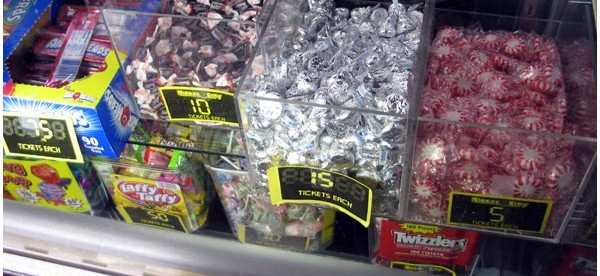When Canadian Kids Protested Eight-Cent Candy

A candy bar — let’s go with the criminally underrated Sky Bar for example — will cost you about $1 nowadays, give or take. Accounting for inflation (and even though I’m about to talk about Canada, we’re going to use all U.S. dollars here, because accounting for inflation and for currency exchange rates at the same time is basically impossible for someone without an advanced math degree), that same candy bar should have cost about $0.10 — two nickels — back in 1947. But if you were a kid in British Columbia in, say, March of that year, you could have gotten your candy for half that price. A chocolate bar would have run you about five cents.
But if you went to the Wigwam Cafe in Ladysmith, British Columbia, on April 25, 1947, your nickel was no longer enough. That day the cafe raised the price to eight cents — a 60% spike — and in doing so, started a nationwide protest.
Five-cent chocolate is really great (or, 50 cent chocolate in today’s economy) if you’re a kid, because that’s probably how much money you can finagle into your pocket on a regular basis. That was certainly true for the kids of Ladysmith — a small town on Vancouver Island — because on that April day, a number of them came to the Wigwam to buy themselves a tasty treat. And when they arrived, they found out the bad news. As one customer named Parker Williams reminisced 65 years later, the kids were upset: “We can’t tolerate this,” he told the Globe and Mail. “The nickel, to us, had some purchasing power. You could get your ice cream, your bottle of pop, or your chocolate bar.”
And they didn’t tolerate the price change. Instead, the children agreed: a boycott was in order. The kids organized a protest against the 8-cent candy. They took to the streets in front of the store, singing songs and holding signs. Other children in the town heard about the demonstration and joined the cause. The press came in and covered the event. Wigwam, apparently, didn’t capitulate, at least not right away. But the Ladysmith kids weren’t defeated — they were celebrities.
The images of them protesting spread to children in other towns, and unfortunately for the general stores in those areas, candy prices were also on the way up. (Inflation wasn’t something specific to Ladysmith.) Kids across the province joined the protests, bringing them to their local stores. Kids made signs with slogans such as “Don’t Buy 8¢ Bars. Lower Prices to 5¢. We Are Smart” and “Let the Sucker Pay 8¢. We Won’t,” as seen on this Mental Floss article. And as Mental Floss explained, British Columbia was just the beginning:
Ten kids blasting bugles led 60 classmates in a march on Ottawa’s Parliament Hill. Five hundred sign-carrying students from three area high schools gathered at the Christie Pits Park in Toronto. The movement continued with additional protests in Calgary, Edmonton, Winnipeg, Montreal, Quebec City, and throughout the Maritimes, with police being called out to break up the larger gatherings. In all, over 3000 kids were said to have signed pledge cards promising to boycott candy until the price was brought down.
Unfortunately for the kids involved, in early May, the protests came to a screeching halt. In Toronto, one of the organizations supporting the protesting children happened to also be affiliated with the Communist Party in the area, with rumors circling (likely untrue ones) that the organization was using the protests as a way to recruit young members. Many parents forbade their children from demanding 5-cent chocolate as public perception of the protests flipped. The demonstrations ended and the price of chocolate remained at 8 cents.
Bonus Fact: Some Popsicle-brand popsicles come twinned — two sticks with two popsicles, conjoined. (Here’s a picture.) According to the Popsicle website, this was a Great Depression-era innovation, designed so that “two children could share an ice pop for just a nickel.”
Take the Quiz!: Can you provide the lyrics to the ‘Oompa Loompa’ song from Willy Wonka and the Chocolate Factory? Caution: may get the song stuck in your head.
From the Archives: The Nazis’ Chocolate Bomb: It didn’t work.
Related: “The Five Cent War,” a documentary on the 1947 chocolate protests.
